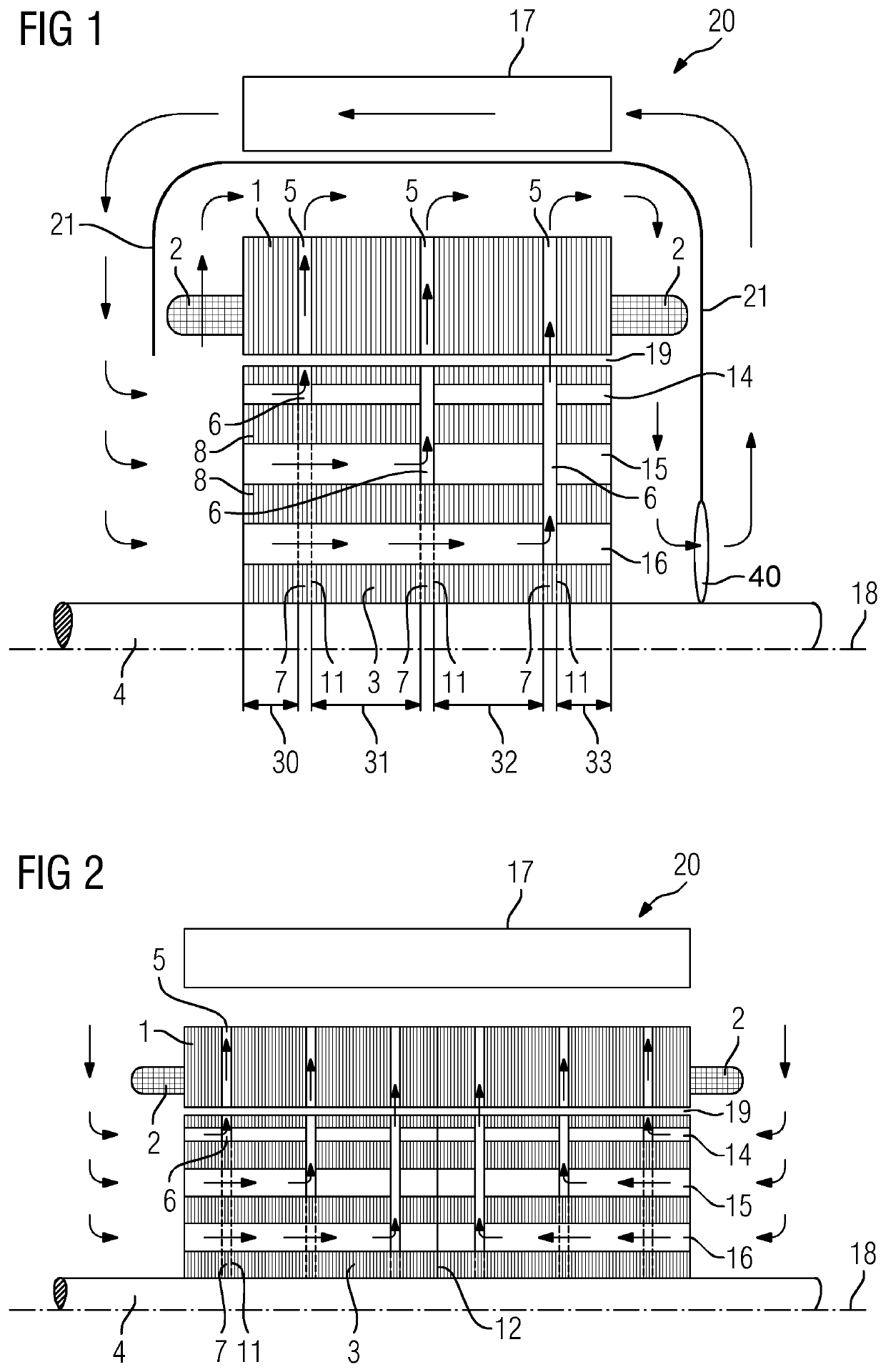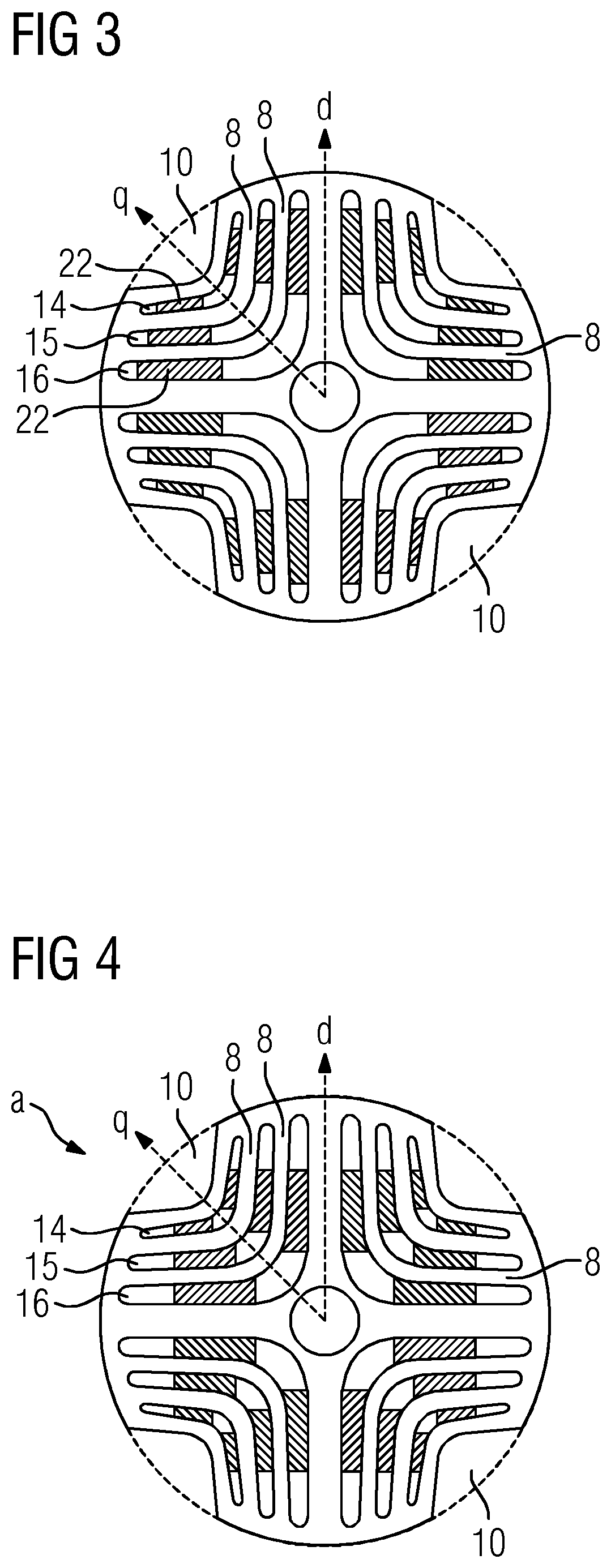Synchronous reluctance machine
a synchronous and synchronous technology, applied in the direction of magnetic circuit rotating parts, electric generator control, shape/form/construction, etc., can solve the problems of complex manufacturing low power factor, and low so as to increase the efficiency of synchronous reluctance machines
- Summary
- Abstract
- Description
- Claims
- Application Information
AI Technical Summary
Benefits of technology
Problems solved by technology
Method used
Image
Examples
Embodiment Construction
[0042]FIG. 1 shows, in a part longitudinal section, a synchronous reluctance machine 20 comprising a stator 1 with a winding head 2 on each of its axial end faces each of which winding heads belongs to a winding system, not shown in greater detail, which is embedded in substantially axially extending grooves of the stator 1.
[0043]The stator 1 is spaced apart from a rotor 3 by an air gap 19, wherein the rotor 3 is connected in a torsion-proof manner to a shaft 4 and mounted rotatably about an axis 18.
[0044]The rotor 3 is embodied as a four-pole reluctance rotor, wherein, as viewed in the circumferential direction, flux blocking sections 14, 15, 16 and intermediate flux conducting sections 8 form four poles. In this exemplary embodiment, viewed in the radial direction, three flux blocking sections 14, 15, 16 are present.
[0045]The inventive concept is not restricted to a four-pole synchronous reluctance machine 20 but can also be transferred to two-pole, six-pole, eight-pole machines e...
PUM
 Login to View More
Login to View More Abstract
Description
Claims
Application Information
 Login to View More
Login to View More - R&D
- Intellectual Property
- Life Sciences
- Materials
- Tech Scout
- Unparalleled Data Quality
- Higher Quality Content
- 60% Fewer Hallucinations
Browse by: Latest US Patents, China's latest patents, Technical Efficacy Thesaurus, Application Domain, Technology Topic, Popular Technical Reports.
© 2025 PatSnap. All rights reserved.Legal|Privacy policy|Modern Slavery Act Transparency Statement|Sitemap|About US| Contact US: help@patsnap.com



